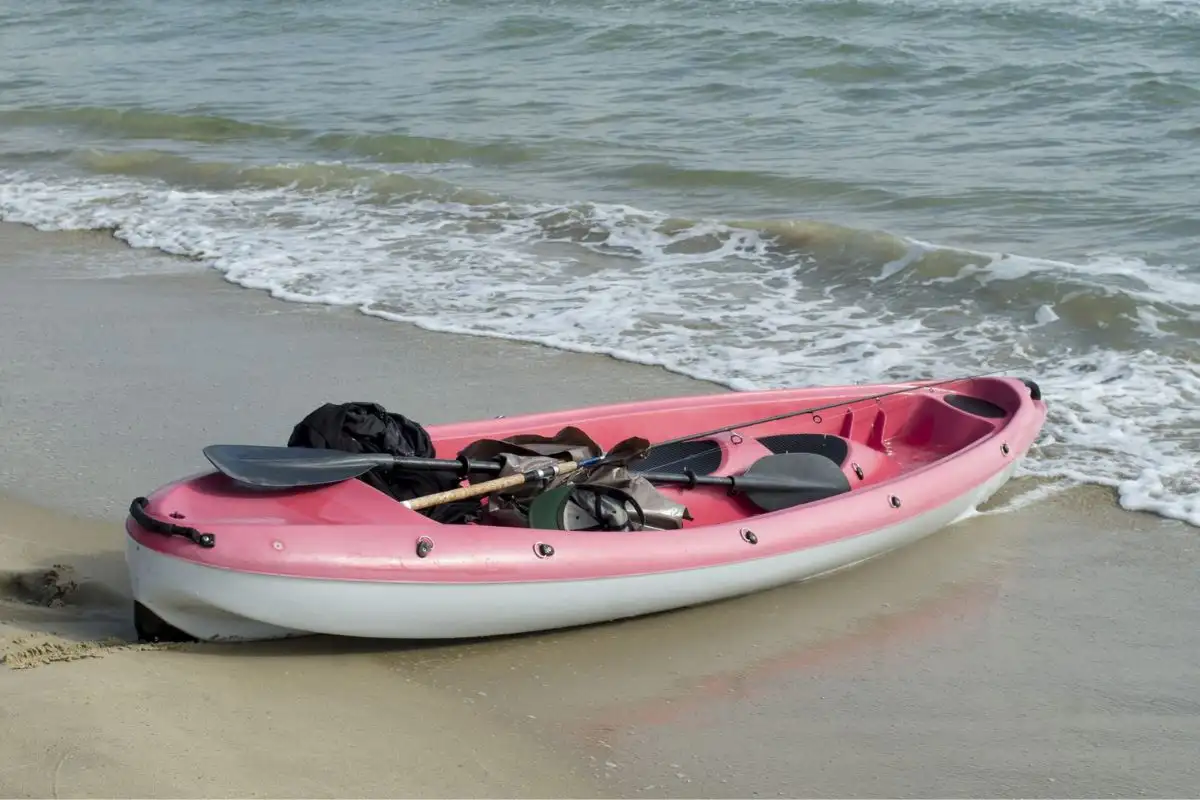You already have a tandem kayak to enjoy when on joint adventures together, and now you want to take it out by yourself and wonder if you can go solo in a tandem kayak? You got this!
The advantages to solo use of a tandem kayak are there’s more room in the kayak, the longer kayak will track better, and they are more stable. The disadvantages are that tandem kayaks are less maneuverable in tight spaces, are harder to maintain speed with, and are heavier to transport by yourself.
Many years ago, we rented tandem kayaks for our adventure in northern Minnesota’s BWCA (Boundary Water Canoe Area).
Tandem kayaks were rented mainly because we carried quite a bit of extra gear and needed additional storage. I was surprised how well they were handled by one person!
Here are the six things I learned rather quickly on that one-week trip in a nutshell!
- (If you are interested in a BWCA trip for yourself, hit the Forest Service BWCA page for additional information!)
| Single Person Using a Tandem Kayak | Pros | Cons |
| More leg/storage room | X | |
| Tracks better | X | |
| More stable | X | |
| Less maneuverable | X | |
| Harder to maintain speed | X | |
| Heavier to transport by yourself | X |
More legroom and storage – It almost goes without saying a longer tandem kayak with only one person in it will have quite a bit more storage and legroom.
Tracks better – A tandem kayak with a greater length will have a longer keel displacing water and give you better tracking while paddling.
More Stable – I’m not an engineer, but with more of the kayak contacting the water than my sit-on-top fishing kayak, and possibly the weight distribution, the tandem kayak was certainly more stable on the water.
Less maneuverable – When desiring to turn around quickly or in a narrow waterway, it was certainly difficult to swing the bow around fast when needed. Tandems will take more space to turn.
Harder to maintain speed – I’m going to say the extra drag the tandem kayak creates in the water did make it harder to maintain any type of speed. Canoes with two people paddling zipped right past us!
Heavier to transport by yourself – Not going to lie here! Portaging, loading, and unloading a tandem is way tougher on one person than using a one-person fishing kayak!

Below are people’s most common concerns and tips for jumping solo into a tandem kayak.
Can One Person Control a Two-Person Kayak
One person can control a two-person kayak by sitting in a position to distribute the weight throughout the kayak evenly. With an even weight distribution, the kayak’s bow remains low and doesn’t catch as much wind pushing it laterally. Proper paddling strokes will keep your momentum and control.
I found with a little practice and shifting my body around, I could keep the bow down in the water, and paddling became easier.
If you’re carrying camping gear, fishing equipment, coolers, and heavier dry bags for your clothing and sleeping bag, place them accordingly into your two-person tandem kayak.
Controlling a tandem kayak is about even weight distribution as much as it is anything else. This gives you the foundation to build your paddling stroke upon.
Is It Hard to Paddle a Tandem Kayak Solo
Paddling a tandem kayak solo is achieved with the proper paddle length for your body size and utilizing sound paddling techniques. Wind, narrow waterways, and vegetation will be your principal encumbrances. Choose good paddling routes through these areas, and you will have no issues.
On open waterways, I had zero issues when paddling the rented tandem. Once I became closer to the shore for a portage, the kayak was tougher to navigate through the vegetation.
Which Is Safer a Sit-In or Sit-On-Top Kayak
Generally speaking, sitting lower in the water makes people feel more safe and secure in a sit-in kayak. This is called ‘secondary stability.’ Sitting lower gives you a lower center of gravity and less chance of capsizing when leaning over. The higher you sit, the more your stability will decrease.
Primary stability involves the design of the kayak. Its length, width, and water displacement volume give it its initial stability features in the water.
Once you begin to raise the center of gravity, the propensity to capsize increases when leaning over or having a water swell tip you over.
I prefer a sit-on-top kayak because it is easier for me to exit it when needed. In addition, wearing a good life jacket or PFD will keep you afloat if you accidentally go into the water

Where Should One Person Sit in a Two-Person Kayak
With little to no extra weight or gear in the two-person kayak, sit near the middle, so the weight is evenly distributed, making it easier to control the kayak. When carrying extra gear, place it so you may sit in the middle. You may need to shift your positioning if the bow or stern is heavier.
It’s easiest to paddle the tandem kayak when you’re sitting as close to the middle as possible. Generally, this is also the widest section of the kayak.
Being in the middle allows you a higher degree of control when paddling. When packing gear into a tandem kayak and the bow is heavier, you’ll need to sit closer to the stern to balance it out.
I recommend you load the weight in the bow and sit closer to the stern than the other way around. It’s easier to control the bow from the rear than the rear from the bow.
Are Tandem Kayak More Stable
Tandem kayaks are more stable and possess better primary stability than their single-seat counterparts. A wider beam and longer length provide a larger platform in the water, providing more stability.
Are Tandem Kayaks Harder Than Single Seat Kayaks
Tandem kayaks are not any harder to use than single kayaks. They offer more room than a single kayak, and their versatility in seat positioning provides you better control than a single-seat kayak. Maneuvering in tighter waterways is diminished compared to a single kayak.
What Is the Best Length for a Two-Person Tandem Kayak
Most tandem kayaks range in length from 10′ to 12′. Ocean kayaks can reach 17′. A solid size of 12′ to 14′ is optimal for two people and for one person to paddle solo and transport. A 14′ tandem offers plenty of stability and a good-sized payload for extended kayak camping trips.
Setting Up Tandem Kayaks for a Single Person
Setting up a tandem kayak for solo use is accomplished by moving the adjustable seat to where your weight and payload are balanced within the kayak. When the seating isn’t adjustable, opt to sit where you believe you’ll have the most control.
Having a good paddle that fits you properly with a good blade angle is paramount to controlling a longer tandem kayak by yourself.
Most people are more comfortable sitting near the kayak’s stern to “see” what the bow is doing. With your weight at the rear, the bow will rise and catch the wind, pushing it laterally.
If your two-person kayak has a skeg you may have to sit near the rear to manipulate the skeg while moving.
Advantages of One Person Using a Tandem Kayak for Fishing
The biggest advantage of using a tandem kayak is its extra space and stability. Traditional fishing kayaks often have limited storage areas for tackle and fishing equipment.
You don’t need to take more gear than you’ll require but believe me, the ability to take a bit more gear can add a lot of fun to your day!
And if you have access to water like the BWCA, where you can camp and fish for a few days, then paddle to a different camping spot, take a tandem kayak once and enjoy the added room and stability.
Have fun and stay safe out there!
